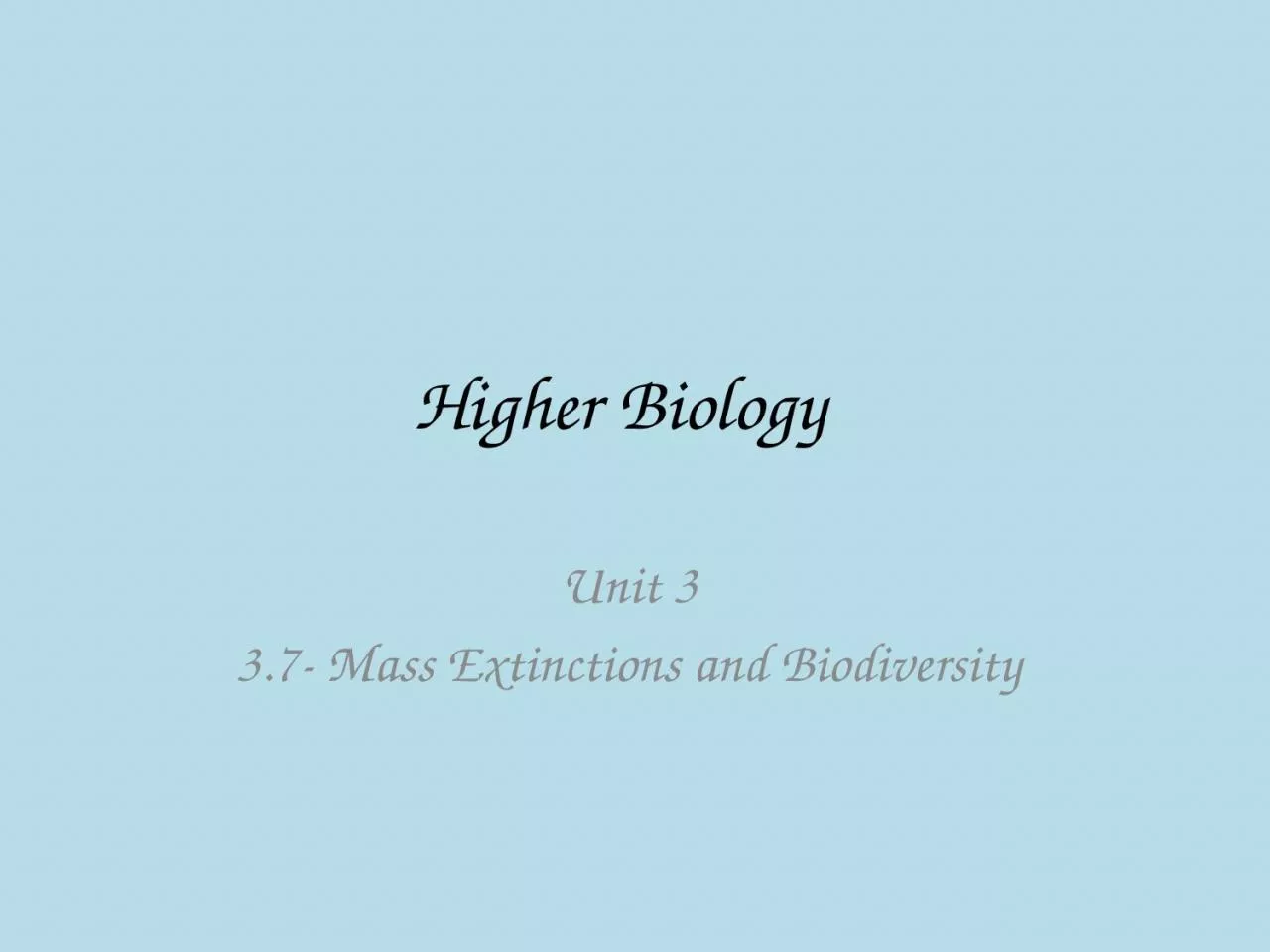

Extinction When an organism is classed as extinct there are no living members of that species left Extinction is a natural process where organisms that are less suited to an environment die out Throughout the history of earth there have been several mass extinction events ID: 1026620
Download Presentation The PPT/PDF document "Higher Biology Unit 3 3.7- Mass Extinc..." is the property of its rightful owner. Permission is granted to download and print the materials on this web site for personal, non-commercial use only, and to display it on your personal computer provided you do not modify the materials and that you retain all copyright notices contained in the materials. By downloading content from our website, you accept the terms of this agreement.
1. Higher Biology Unit 3 3.7- Mass Extinctions and Biodiversity
2. Extinction When an organism is classed as extinct there are no living members of that species leftExtinction is a natural process where organisms that are less suited to an environment die outThroughout the history of earth there have been several mass extinction events
3. Mass Extinctions
4. Mass ExtinctionMass extinctions are closely related to changes in global climate These changes in climate result in different selection pressures being places on organisms Only the organisms best suited to the new conditions will survive and reproduceEvidence of mass extinctions comes in the form of fossil records
5. Impact on Biodiversity Immediately following a mass extinction biodiversity may be reducedOver time speciation will occur and biodiversity will increase as new species emergeFor examples, the diverse number of mammalian species that now exist evolved from a small number of common ancestors
6. Extinction Rate Extinction rates can be difficult to measure accurately so are very approximateHuman impacts on the environment are increasing the rate of extinction across many speciesFossil records show that the arrival of Homo sapiens in a new area was quickly followed by extinction of the largest animals (megafauna)
7. Ecosystem Degradation Humans are changing the environment to make space and resources available for the increasing human population Over hunting and habitat destruction have resulted in the loss of hundreds of species of birds and mammals
8.
9. Measuring Biodiversity When looking at biodiversity there is no single measure used to compare the differences between living thingsBiodiversity measures are useful in helping us to monitor the changes in populations and ecosysystemsThere are 3 measurable components of biodiversity
10. Genetic Diversity Genetic diversity results from the variation shown by the number and frequency of alleles possessed within a population By measuring the number and frequency and alleles we can observe loss in genetic variation within a populationThis may be a problem for a species as the loss of certain alleles may limit their ability to adapt to changing conditions in the future
11. Species Diversity When measuring the species diversity of an ecosystem 2 measures are taken into accountSpecies Richness- the number of different species presentRelative abundance- the proportion of each species in the ecosystemEcosystems can share the same species richness but differ in their relative abundance of each species
12. Ecosystem Diversity Ecosystem diversity refers to the number of distinct ecosystems present in a defined area Within a geographical area there can exist a number of different ecosystems
13. Island Biogeography Island biogeography is the study of the factors that affect the distribution and diversity of species on islandsIslands can refer to:A true island- a land mass surrounded by water permanently A habitat island- an area surrounded by a different ecosystem that cannot be colonised by the island speciesThe more isolated an island the lower the diversity found among its speciesThe smaller the surface area of the island the lower the biodiversity